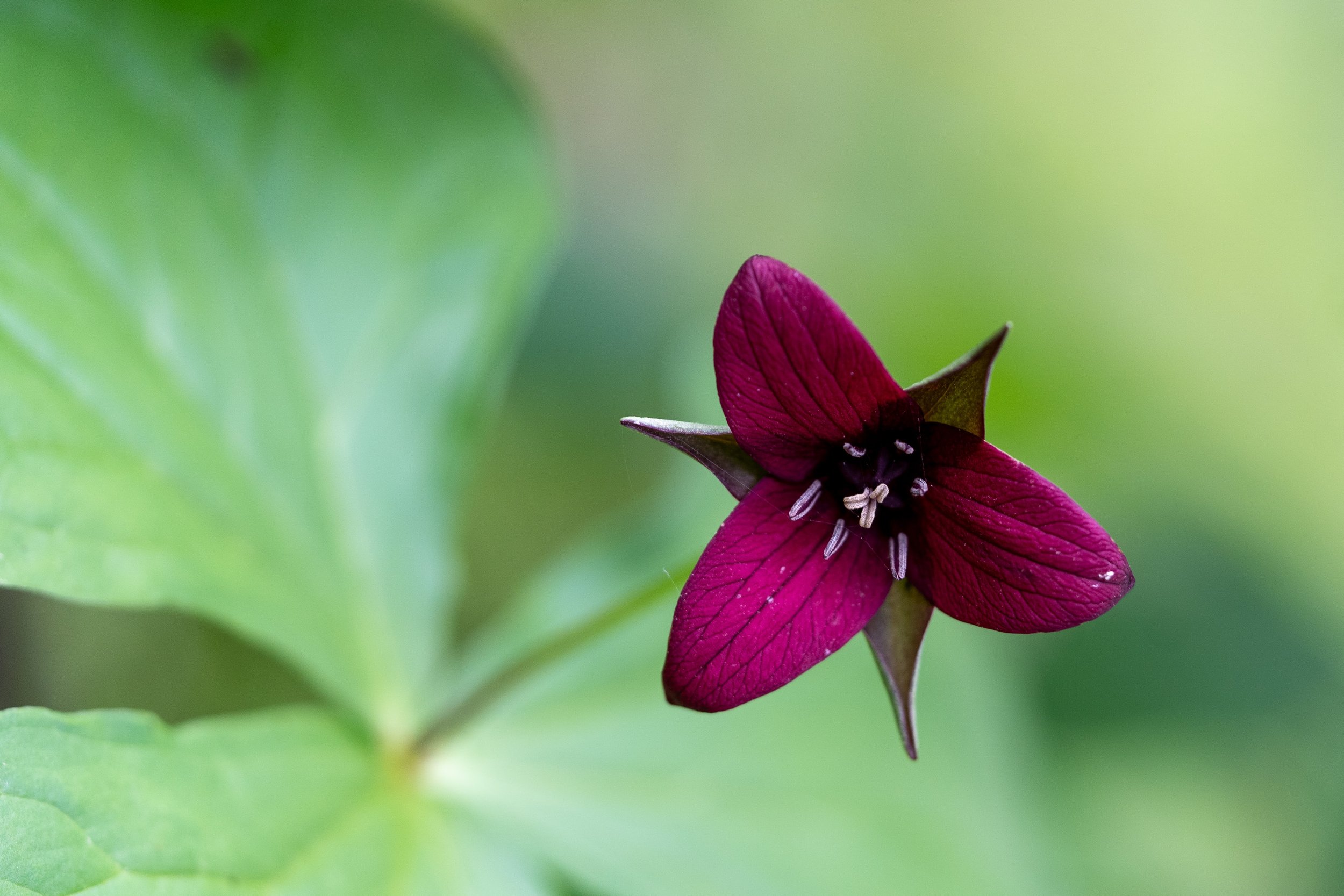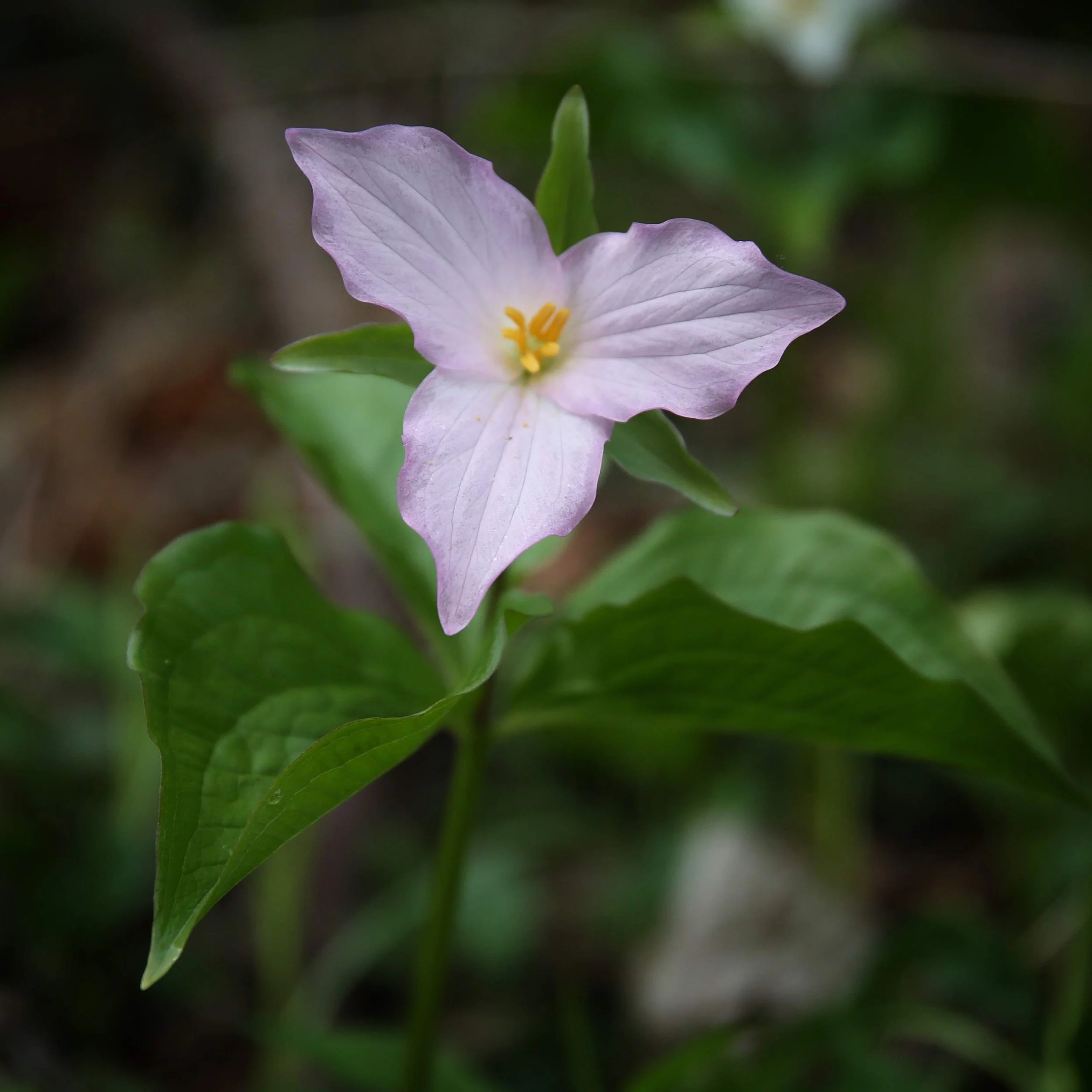Spring Ephemerals
Trillium—everyone’s favorite spring ephemeral!
Spring is in full swing in the Blue Ridge! We can tell thanks to the small, ground-dwelling plants that have started to bloom—the spring ephemerals! The root of their name comes from the Greek word “ephemeros”, meaning short-lived. Some of these plants are visible for less than a month, and bloom for only a few days! Most of these species are perennial, meaning they have above-ground parts that die back and regrow, while the underground plant may live several years. Those underground tubers, corms, or bulbs allow the plant to store sugars and proteins over winter and kickstart its growth when the soil thaws.
Appearing early gives the plants an evolutionary edge. If a plant blooms when few others do, the chances of successful pollination increase. Early blooming also creates niches for other organisms. Most bees and butterflies follow life cycles that synchronize with late spring and summer blooms. A few native bees, like Dunning’s miner bee, have shifted their life cycle to emerge early. Bumblebee queens will also wake from hibernation and feed on spring ephemeral nectar before establishing new hives.
Among the first to emerge is the spring beauty. Around here, you might encounter two species- Claytonia virginica and Claytonia caroliniana. Both flowers have five white petals with pink stripes. Virginia spring beauty has slender, grass-like leaves, while Carolina spring beauty has wide, paddle-shaped leaves. Each flower erupts from a pea-sized corm that tastes like sweet potato! Unfortunately, the corms are very slow growing and take years to reach maturity- so heavy foraging is frowned upon.
Another pair of white flowers that emerge slightly later are dutchman’s breeches (Dicentra cucularia) and squirrel corn (Dicentra canadensis). They are very closely related to Bleeding Heart. Their lacy-looking leaves are similar, but their flowers are different. The flowers of Dutchman’s breeches have elongated lobes, making them look like a pair of pants. Squirrel corn has the classic heart-shaped flower. Underground, both have a tuber consisting of many nodes clumped together like an ear of corn- the perfect snack for animals waking up from hibernation!
The perfect symmetry of a large-flowered trillium.
One iconic Appalachian wildflower is trillium, also called wakerobin or birthroot. With trillium, everything comes in threes—three leaves, three sepals, three petals, three stigmas. Here, we have several species of trillium: purple (Trillium erectum), painted (T. undulatum), large-flowered (T. grandifolium), and toadshade (T. sessile). Purple trillium doesn’t only come in purple- its flowers can also be maroon, brown, yellow, or white. Purple trillium and toadshade are pollinated by flies, who are attracted to the flower by the smell of rotting meat. It’s normal to stumble across a large patch of trillium growing close together. Chances are, this entire patch is actually a single plant! The main body of the plant is a network of horizontal, root-like stems called rhizomes that spread under the soil’s surface. The rhizome network may take up to seven years to mature before blooming its first flower. Trillium are also fairly long lived- some individuals are known to be over 50 years old.
Want to see spring ephemerals in the wild? Join us on Sunday, April 27 to enjoy the first blooms of the year on an expert-led, gentle walk. You may see bloodroot, cutleaf toothwort, spring beauty, trilliums, Dutchman’s breeches, and maybe even an early mayapple. Bring a camera! This is a member-only event; email info@blueridgeidsocverycenter.org or call 276-388-3155 to register!



